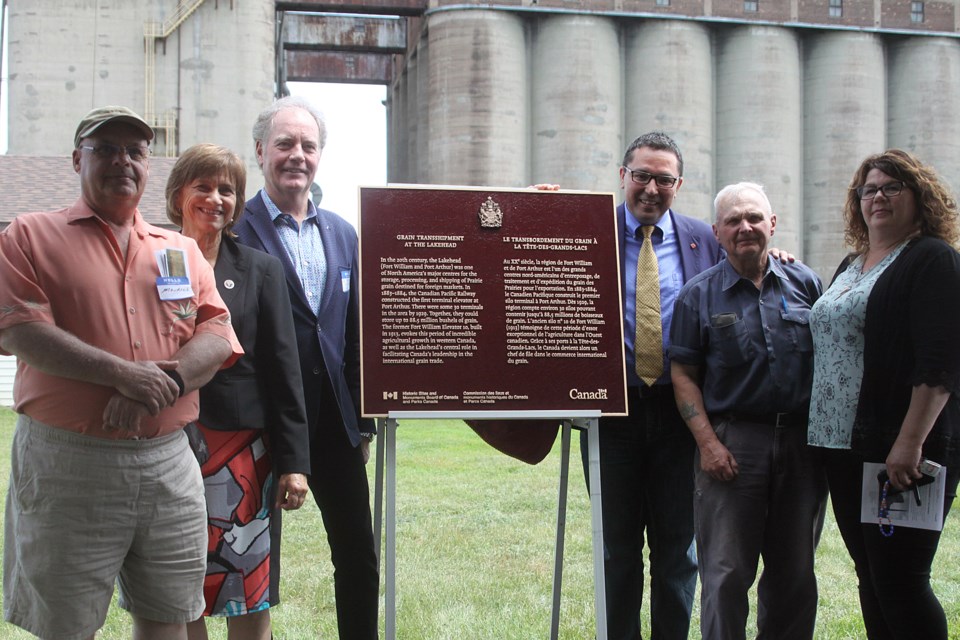THUNDER BAY – For more than 130 years rail lines have brought bushels of grain from western farms east to be shipped through the Great Lakes seaway, creating a port that is a foundational part of the city built at the head of Lake Superior.
The national historic significance of grain transshipment at the Lakehead was officially commemorated in Thunder Bay on Wednesday by the Historic Sites and Monuments Board of Canada and Parks Canada with the unveiling of a plaque that will be displayed outside a former Fort William elevator along the Kaministiquia River.
Robert Paterson, president of the Friends of the Grain Elevators group dedicated to preserving the history, said the national marker helps spread the word of Lakehead’s role in the industry to the rest of the country.
“It’s not a story that’s well told and not a story that’s at the forefront of Canadians’ minds,” Paterson said.
“The grain industry as a whole at the national level has fed the world and developed our economy over the last 100-plus years. We think it’s just time we bring attention to the elevators and the industry.”
The first local elevator terminal was built in 1884, one year after the completion of the Canadian Pacific Railway line connecting Winnipeg and Fort William. That kicked off decades of booming construction, with the port capable of storing nearly 90 million bushels of grain by 1929.
Paterson said at least 30 elevators were operational during the industry’s peak.
“They needed all the capacity they could get, certainly after the Second World War not to mention the First World War,” Paterson said.
Nearly 50 people attended the designation, which was done mere steps from the former Fort William Elevator No. 10 built in 1913 just east of the James Street Swing Bridge.
Joseph Mutz, a former CP Rail worker, said the elevators and the railways were dependent upon each other to succeed.
“In the fall when it was grain season we had to make sure we had the men and same with the elevators so they could take the cars, unload them so we could pull them out and send them back out west to get filled,” he said. “That took a lot of men in the 1950s. There were always trains going.”
Roy Lamore worked for CN Rail for 42 years at each of the elevators the railway served and said his brother and father each worked at Pool Four.
“It was what kept the two cities together,” Lamore said of the former municipalities of Fort William and Port Arthur that amalgamated nearly 50 years ago to form Thunder Bay. “Any place you looked you saw somebody who worked in the elevators.”
Thunder Bay-Rainy River MP Don Rusnak, who made the announcement on behalf of the federal government, said grain shipping is a big part of the local identity.
“I think a lot of people have a connection,” Rusnak said.
“It sustained families here for generations. I meet people in Toronto, Ottawa, Vancouver or other parts of the country who are from Thunder Bay and they talk about the grain elevators. It’s an iconic part of Thunder Bay. Part of what made Thunder Bay, Thunder Bay is the port.”
While the local port has been in a period of resurgence over the last number of years, there are only seven remaining operational elevators as the industry has evolved with automation and technology.
Many of the old elevators have been demolished or destroyed, leaving just a few pieces of living history left.
“People tend to look at the waterfront and you see elevators but you probably don’t really think about it all that much because it’s always there,” Paterson said. “It’s important that we’re a port city and these grain elevators have played a role well beyond our city in terms of what they’ve meant to the world.”
